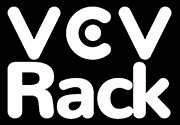Repository
https://github.com/bogaudio/BogaudioModules
Learn how to use all the functionality of Bog Audio's FM-OP Module for VCV Rack.
What Will I Learn?
- You will learn the basic technique of FM synthesis
- You will learn the function of Level FDBK and Depth controls
- You will learn the function of ADSR
- You will learn all the input and output connections
- You will learn how to connect multiple modules for FM synthesis
Lesson Files and Resources
- Bog Audio Modules Manual
- Background on Algorithms
- Download Rack and many modules here - https://vcvrack.com/
- Download my VCV Rack patch for this tutorial from my Github repository https://github.com/buckydurddle/bogaudio
Requirements
To complete this tutorial learners will need to have the following:
- VCV Rack installed on a Mac, Windows or Linux computer
- Bog Audio's module pack installed
Difficulty
This tutorial is at an intermediate level.
Description
This tutorial explores how to manipulate the sound produced by Bog Audio's FM-OP module. We will also discuss some of the basics of FM synthesis.
Learn the basic technique of FM synthesis
We have discussed FM synthesis in previous tutorials. Specifically we have dug deep into FM synthesis when looking at Valley's Dexter module.
In a nutshell, we can modulate an 'operator' (oscillator) by using a second operator. The sound waves produced by both combine to create very interesting new waveforms. We can extend this by adding a 3rd operator to modulate the 2nd. It can get very exciting very quickly.
Several FM-OP modules can be used in series to modulate each other.
Learn the function of LEVEL, FDBK and DEPTH controls
FDBK or feedback uses a desired amount of the operator's output signal to modulate its own sound. DEPTH controls the amount of incoming signal is used to modulate the operators outgoing sound. Level controls the amount of outgoing signal, much like a gain control.
Learn the function of ADSR
Attack, Decay, Sustain and Release controls can be found on this module. You can read up more on ADSR here.
The ADSR envelope is applied to the sound produced by this module, but the controls go a little deeper than just a general envelope. You will notice that beside the LEVEL, FEEDBACK and DEPTH controls there is and ENVELOPE selector. By selecting this you are telling the module that you want that variable to have ADSR applied to it.
Once a gate device is connected to the GATE input the ADSR will be applied to the selected variables each time the gate is received.
Learn how to connect multiple modules for FM synthesis
As mentioned earlier, multiple FM-OP modules can be combined. A patch cable can be taken from the OUT of one module to the FM of a second. The first module will be modulating the second. This can be duplicated with more modules to create very complex sounds.
Learn all the input and output connections
I hope you enjoy this tutorial. If you have any specific questions for me feel free to leave it in the comments of this post and I will do my best to get back to you with an answer.
Cheers,
Video Tutorial
Curriculum
Learn VCV Rack Modular Synthesis Series

If you would like to learn how to use the open source modular synthesis DAW VCV Rack then have a look at these tutorials:
Click here for @buckydurddle's guide to VCV Rack
Learn MuseScore2 Series
Learn Hydrogen Drum Machine Series

If you would like to learn how to use the open source drum machine Hydrogen then have a look at these tutorials:
Click here for @buckydurddle's guide to Hydrogen
Learn Helm Series

If you would like to learn how to use the open source sound software synth Helm then have a look at these tutorials:
Click here for @buckydurddle's guide to Helm
Learn Audacity Series

If you would like to learn how to use the open source sound recording and editing software Audacity then have a look at these tutorials:
Click for @buckydurddle's Guide to Audacity
Logo - http://tytel.org/helm
Logo - https://www.audacityteam.org/
Logo - http://www.hydrogen-music.org/hcms/
Logo - https://www.vcvrack.com
Logo - https://www.blender.org
Hi @buckydurddle,
Welcome back to creating videos again.
Your video tutorial is going to add great value to your series on VCV Rack.
Again, the presentation flows easily from one concept to another. The lesson is well structured and concepts explained with clarity.
Your contribution has been evaluated according to Utopian policies and guidelines, as well as a predefined set of questions pertaining to the category.
To view those questions and the relevant answers related to your post, click here.
Need help? Chat with us on Discord.
[utopian-moderator]
Downvoting a post can decrease pending rewards and make it less visible. Common reasons:
Submit
Thanks @rosatravels. I appreciate your hard work.
Downvoting a post can decrease pending rewards and make it less visible. Common reasons:
Submit
Thank you for your review, @rosatravels! Keep up the good work!
Downvoting a post can decrease pending rewards and make it less visible. Common reasons:
Submit
Thank you @buckydurddle, great video !
Downvoting a post can decrease pending rewards and make it less visible. Common reasons:
Submit
My pleasure. I hope people find it useful.
Downvoting a post can decrease pending rewards and make it less visible. Common reasons:
Submit
Hi @buckydurddle!
Your post was upvoted by @steem-ua, new Steem dApp, using UserAuthority for algorithmic post curation!
Your post is eligible for our upvote, thanks to our collaboration with @utopian-io!
Feel free to join our @steem-ua Discord server
Downvoting a post can decrease pending rewards and make it less visible. Common reasons:
Submit
Hey, @buckydurddle!
Thanks for contributing on Utopian.
We’re already looking forward to your next contribution!
Get higher incentives and support Utopian.io!
Simply set @utopian.pay as a 5% (or higher) payout beneficiary on your contribution post (via SteemPlus or Steeditor).
Want to chat? Join us on Discord https://discord.gg/h52nFrV.
Vote for Utopian Witness!
Downvoting a post can decrease pending rewards and make it less visible. Common reasons:
Submit